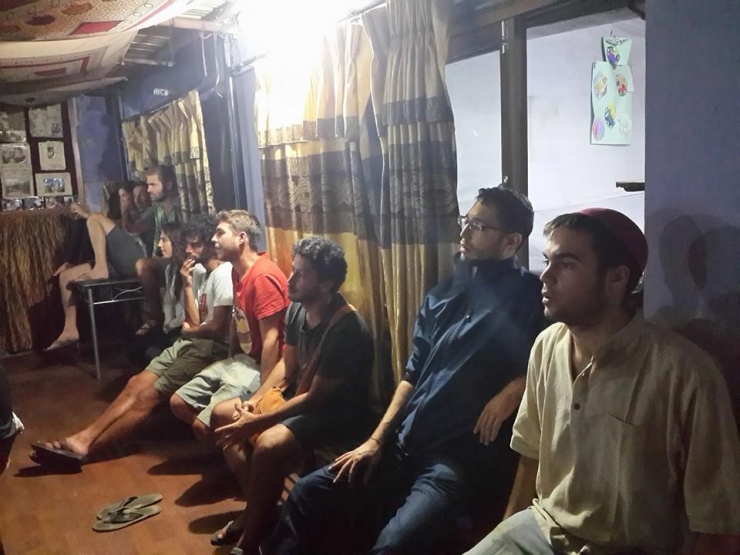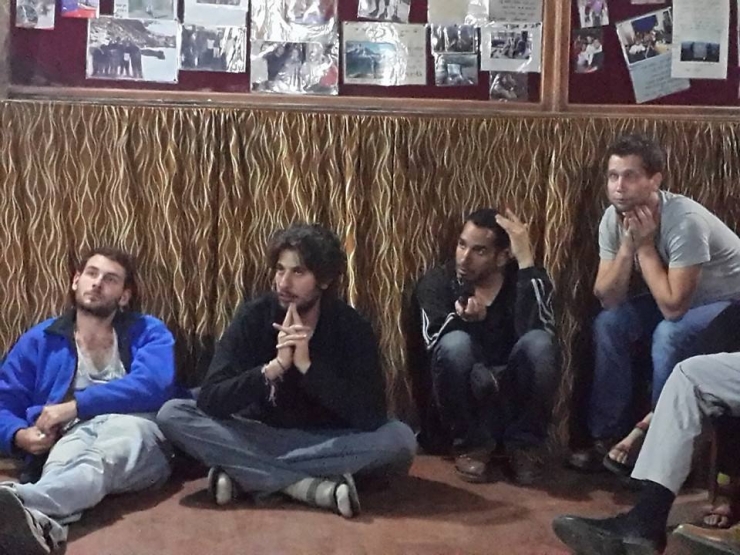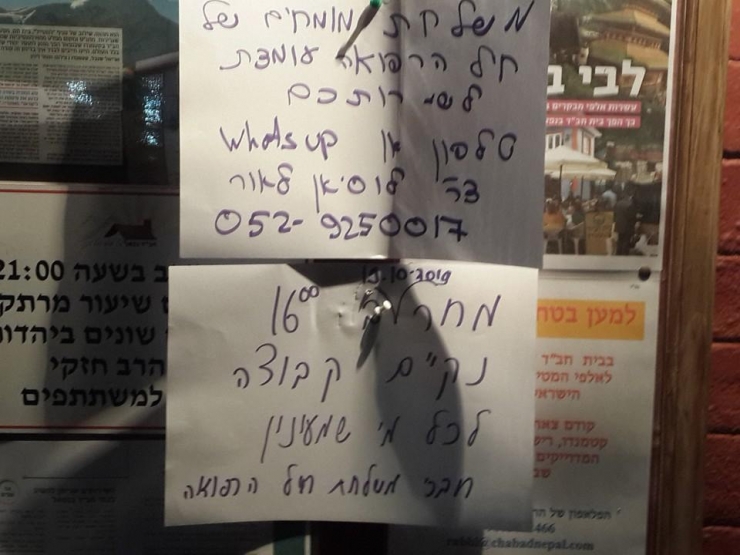Chabad Shliach Helps Out in Himalaya Rescue
When Yehezkel Lifshitz, the rabbi at a Jewish community center in the Nepali capital, answered the phone on Tuesday afternoon, he got an urgent message that helped set in motion an extraordinary, improvised rescue effort for hundreds caught by the ferocious blizzard that battered northern Nepal last week ● Full Story, Pictures
By Raymond Zhong / The Wall Street Journal
When Yehezkel Lifshitz, the rabbi at a Jewish community center in the Nepali capital, answered the phone on Tuesday afternoon, he got an urgent message that helped set in motion an extraordinary, improvised rescue effort for hundreds caught by the ferocious blizzard that battered northern Nepal last week.
Israeli diplomats had also got word that the storm had trapped a group of Israeli hikers high in the Himalayas. They called local officials in the storm-hit area and alerted other embassies, while Rabbi Lifshitz at Chabad House phoned trekking agencies and others who could help.
Before long, Nepal’s armed forces and police, diplomats of many nationalities, Nepali villagers and mountain-guiding and helicopter companies were drawn into a largely ad hoc search for those who survived the storm, and those who didn’t.
By Sunday, hundreds of people—between 200 and 250 of them Israelis, according to the Israeli Embassy—had been brought to safety. The death toll was at least 31, including three Israelis. Dozens of trekkers remain unaccounted for, including between 10 and 15 Israelis.
For many Israeli travelers, the rescue started with a hand-delivered letter dispatched that Tuesday by a group of Israelis who had climbed through pummeling wind and snow to seek shelter in a wooden shack.
“There are Israelis trapped in the tea shop at the pass,” Rotem Snir, a woman trekker, wrote in Hebrew on a piece of notebook paper. “Lives in danger. Help us. Thank you.”
A Nepali porter took the note and headed on horseback for a camp the adventurers had passed on their ascent toward Thorong La, a mountain pass nearly 18,000 feet above sea level. He managed to deliver the SOS to three Israeli trekkers, who called the Israeli Embassy in Katmandu.
Nepali officials on Sunday acknowledged deficiencies in the government’s implementation of the daunting search-and-rescue effort, which ranged over remote trails and avalanche-hit slopes around several of the world’s highest peaks.
Suresh Acharya, joint secretary of the Tourism and Civil Aviation Ministry, said poor coordination among Nepali authorities hampered the rescue’s early days and prevented civilian helicopters from joining the initial search.
“We do not have adequate equipment, like boots and jackets, to immediately deploy staff for snow rescues,” said Govinda Prasad Pathak, deputy superintendent of police in Mustang district, where 173 people had been rescued and 23 found dead by late Sunday.
Nima Namgyal Sherpa, a Nepali physician and mountaineer who helped rescue some Slovak climbers, said the storm—like the deaths of 16 Nepali support staff in an April avalanche on Mount Everest—highlighted the need for a capable national rescue agency in a country that is one of the world’s poorest and depends on income from adventure tourism.
“Here everything is haphazard,” Dr. Sherpa said. “It’s not that we don’t have the manpower or resources…. The government just has to get its act together.”
One big problem this past week, said Niranjan Shrestha, an army spokesman, was a lack of reliable information. “We didn’t know which places had more people who were trapped or who needed immediate help,” he said.
That was where the fast Israeli mobilization paid off.
Katmandu’s Chabad House, across the street from a gem dealer in the capital’s noisy Thamel district, has for almost 15 years been a stopping point for the thousands of young Israelis, usually fresh out of military service, who backpack in Nepal every year.
Since Tuesday, it has also served as a war room of sorts for the storm-rescue effort. From a desktop computer in the synagogue, Rabbi Lifshitz fielded a steady torrent of emails and Facebook FB messages from anxious parents in Israel. He updated a Google spreadsheet containing the names of more than 400 Israelis, color-coded by trekking agency, with their location and status. Israeli volunteers worked the phones and shared information with the embassy. The “hardest thing,” said the rabbi’s wife, Chani, was talking to Israelis back home.
Yoav Dari, a 59-year-old retired bank employee who lives in a village north of Haifa, was about to go mountain climbing with his two children when he heard about the storm and decided to stay in Katmandu to help. On Wednesday he helped set up an informal dispatch center at the Israeli embassy.
“Let’s just say we improvised,” he said.
“When parents call you and cry, the problem is that you cannot tell them exactly, ‘Everything is OK.’ Because you don’t know,” she said. “I didn’t know who was alive, who was not.”
For the Israeli trekkers who sent the initial plea, for help, eventually staying in the tiny teahouse likely saved them. Jacob Megreli, a 24-year-old medical student in the group, said that after the storm cleared on Wednesday and they started down the mountain, he realized how fortunate they had been.
He and another man rescued an Israeli who had been buried in snow above his head. Only his gloved, outstretched hands were visible, Mr. Megreli said. He said he encountered a corpse on the trail every 20 minutes for a while after that. “At this point, I think we understood the disaster.”
By Sunday, search operations were winding down. Authorities said fewer than 10 people were listed as missing in the two districts connected by the Thorong La pass. According to the Israeli embassy, between 10 and 15 Israelis were still unaccounted for. They weren’t likely in danger, said Guy Shrayer, assistant to the Israeli consul in Nepal; they simply hadn’t made contact.
On Sunday afternoon, three paper signs, written in magic marker, were taped onto a notice board in Chabad House.


















363
Join ChabadInfo's News Roundup and alerts for the HOTTEST Chabad news and updates!










































